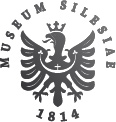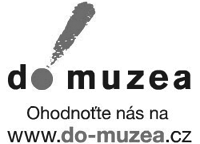Slezský sborník
rok 2013
ročník 111
číslo 2
Obsah / Contents
Studie / Articles (s. 165–287)
Dalibor PRIX: První opavští Přemyslovci jako zakladatelé
s. 165–192
The first Opavian Přemyslids as founders
The report tries to analyze the foundation activities of the first two generations of Opava Přemyslids, the dukes Nicholas I (* probably 1253–1255 – † before 25.7.1318) and his son Nicholas II (* around 1288–8.12.1365) in Opava and Racibórz dukedom in the years 1281–1365. Although both Přemyslid dukes belonged to the most highly-situated, politically and powerfully active individuals in the Bohemian kingdom of their time, the analysis implies that foundation of church institutions (convents, chapters etc.) did not belong to their frequent proceedings. It was so not because of some ‘dynastic strategy’ but it was the result of various factors. Whereas Nicholas I had quite a few opportunities and favorable circumstances for foun-ding activities, and nevertheless he probably founded the Dominican monastery by St. Wenceslas church in capital Opava in 1291, his son Nicholas II behaved entirely differently. Although the background of his long and quite peaceful reign both in Opava and from 1336 in Racibórz dukedom as well would allow him to found convents, chapters etc., only the foundation of charity hospital of St. Nicholas in Opava suburbs before 1333 can provably be connected to his activities, into which he introduced the Order of St. John in 1358–1359. Not even for them did he found or built the elsewhere usual commandery at the hospital. Most probably did Nicholas II not even try to found any other convent or chapter. And that in spite of the fact that he did not hesitate to act as a moderate founder-benefactor towards the church and older convent and chapter institutions in his countries. The reasons for this restrained behavior of Nicholas remain unknown; but most likely they were of personal nature because in his political surroundings the duke could observe ostentatious and plentiful foundation activities of both Bohemian kings and many Silesian and imperial dukes who he often met and knew well many of them.
Key Words: Moravian-Silesian borderland, Nicholas I., Nicholas II. dukes of Opava, monasteries, foundations, 13th and 14th century
Marek SKUPIEN: Nástin historie farnosti Kravaře do konce 17. století
s. 193–210
A history outline of the Kravaře parish until the end of the 17th century
The study tries to introduce the history of a catholic parish by the church of St. Bartholomew in Kravaře by Opava in a brief form, and that until the end of the 17th century. Due to the first Eichendorffs the rehabilitation period of catholic church position, or the stabilization period in the parish ends right at this time after the reformation era and the Thirty Years’ War. The author comes out mainly from the sources study and he tried to record every medieval mention of the parish that altogether restrict to the names of the priests and support the patronage of the church. The author further captures the evangelic stage in the history of the parish. Attention was also paid to the topics of property conditions of the church and parish, the building-historical development of the old Kravaře church, the extent of parish district, parish dwellings, or the parish situation in the context of church administration development.
Key Words: parish, church, catholic church, Lutherans, Opava region, Krnov region, Olomouc diocese, Eichendorffs
Petr POPELKA: Hlavní problémy budování moderní silniční infrastruktury v českých zemích v době tereziánské a josefínské (na příkladu Slezsko-haličské silnice)
s. 211–236
The main problems of constructing a modern road infrastructure in the Bohemian lands in the time of Maria Theresa and Joseph II reigns (on the example of Silesian-Galician road)
The study deals with the process of building a modern road infrastructure in the time of Maria Theresa and Joseph II reigns. The author analyses the basic features of the transport policy of the imperial court during the enlightened absolutism in connection with the construction of Silesian-Galician road connecting Moravia, Silesia and Galicia. The research implies how strongly the transport policy was bound together with the monarchy’s geopolitical interests that caused a relatively big dynamism of changes in transport policy in the Silesian-Galician area. The article analyses the main problem of the capitally challenging road building, i.e. the financial problem. A complex system of financing roads was created in the Habsburg Monarchy based on the co-operation of the state, the particular countries, the estates and the subjects. For constructing roads in the Habsburg Empire in the 18th century both statute and wage labor was used. Other problems are shown illustratively in the study as well that accompanied big investments into infrastructure in the 18th century.
Key Words: transport history, transport infrastructure, road, Austrian Silesia, statute labor, 1740–1790
Martin Jemelka – Ondřej Ševeček: Německé podnikání Baťova koncernu: Studie k hospodářským a sociálním dějinám hornoslezského továrního města Ottmuth (Otmęt) – část II
s. 237–274
Baťa concern’s German business activities: A study of the economic and social history of the Upper Silesian company town of Ottmuth (Otmęt)
The present study focuses on an important chapter in the history of the Baťa concern involving its penetration into the German market and its decision to establish a production factory and network of stores and services in Upper Silesia, in the locality of Ottmuth (today Otmęt). The study traces in detail the concern’s efforts to establish its specific enterprise system in the German environment, and to implement its own model of the so-called company town in the building of Ottmuth. Despite the fact that the study concentrates mainly on the development of the enterprise and the company town of Ottmuth until 1945, it endeavours, within the limitations of available source materials, to identify long-term developmental trends of this industrial locality and to place it in the relevant context of economic and social history. In view of the fact that this is the first study on the topic, it also aims to recapitulate facts established through archival research and to provide an overview, so that they may serve as a point of departure for further investigation. From the perspective of the topics and problems covered, the study is meritoriously focused on the issue of the economic and social development of the concern enterprise Deutsche Schuh-Aktien Gesellschaft Bata, Ottmuth A.G., including its successor companies (OTA Schlesische Schuh-Werke Ottmuth A.G.), and on the programme it implemented in building the company town of Ottmuth. The study traces the main milestones of the company’s organisational structure as well as its economic development, issues involving the organisation of labour, social and employment policies, the building of the company town and – sources permitting – also the relationship of the company management to state and local administrative institutions. The study concludes by outlining the Ottmuth factory’s main developmental milestones after 1945, when the entire region became part of Poland in the aftermath of World War II.
Key Words: Baťa concern, Upper Silesia, Ottmuth (Otmęt), Zlín, company towns, footwear industry, economic history, social history, National Socialism, 1929–1955(1989)
Mária Ďurkovská: Reakcie štátnych úradov na aktivity Karpatonemeckej strany na Spiši v rokoch 1935–1938
s. 275–287
Reactions of the state agencies in regard to the activities of Carpathian German Party in the Spiš region during the years 1935–1938
The article is monitoring the reactions of the state agencies in regard to the activities of Carpathian German Party in the Spiš region during the years 1935–1938. The Carpathian German Party assumed a formative role in the political development of the German community during the third decade of the twentieth century and it successfully integrated a growing share of German population. After the fusion of Carpathian German Party and the activists of Sudeten German Party began a systematic organisational work in Slovakia with the main aim to integrate all Germans into its ranks.
Key Words: Carpathian German Party, Sudeten German Party, Czechoslovakia, Franz Karmasin, Konrad Henlein, Zipserdeutsche Party, State agencies
Recenze / Reviews (s. 288–297)
Zprávy o literatuře / Brief Notices (s. 298–310)
Kronika / Chronicle (s. 311–317)
Bibliografická příloha / Bibliography (s. 318–319)
Poslední aktualizace článku: 06.10.2015
Vytisknout celý článek







